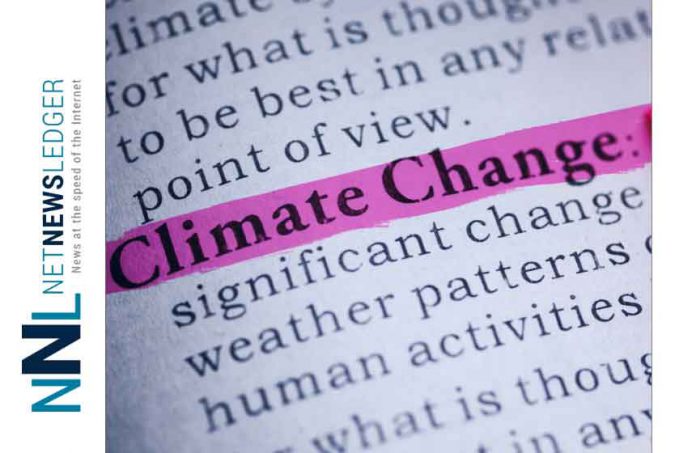
A Disappointing Trajectory Towards 2030 Emission Goals
OTTAWA – CLIMATE – The latest audit from the Commissioner of the Environment’s office indicates a troubling reality: Canada is unlikely to meet its ambitious target of cutting carbon emissions by at least 40% below 2005 levels by 2030.
This shortfall in meeting climate commitments reflects a broader challenge in environmental policy and action.
Examining Key Areas: A Comprehensive Audit
The Commissioner’s fall reports delved into five crucial areas: the adoption of zero-emissions vehicles by the government, the construction of charging stations, monitoring marine fisheries catches, the handling of environmental petitions in Parliament, and overall progress in reducing emissions. This comprehensive review uncovered significant shortcomings in Canada’s efforts over the past two decades, with notable emission reductions occurring mainly during the 2008 financial crisis and the COVID-19 pandemic, largely unrelated to deliberate policy actions.
Canada’s Lagging Performance in Emission Reduction
Jerry DeMarco, the Commissioner of the Environment and Sustainable Development, presented a stark assessment: Canada is the only G7 nation failing to achieve any emissions reductions since 1990. Despite ratifying the Kyoto Protocol in 2002 and adopting the Paris Accord targets in 2015, Canada’s actual performance has been lacking. The 2030 Emissions Reduction Plan, although outlining significant measures, has seen critical delays in implementation, particularly in areas like the Oil and Gas Emissions Cap and the Clean Fuel Regulations.
The Plan’s Shortcomings and Lack of Clarity
A significant issue identified in the audit is the absence of clear timetables and specific targets for the majority of the proposed emission reduction measures. This lack of transparency and accountability hinders the ability to track progress and hold the government responsible for its climate commitments. The audit also criticized the optimistic assumptions and inadequate peer review in the emissions modelling used in the plan.
Urgent Need for Enhanced Accountability and Monitoring
The report emphasizes the critical need for more robust accountability and monitoring mechanisms. Many emission reduction measures lack completion deadlines, increasing the risk of missing the 2030 target and contributing more greenhouse gases to the atmosphere. The fragmented responsibility across federal organizations and the insufficient inclusion of Indigenous groups in the planning process were also highlighted as areas needing improvement.
The State of Zero-Emission Government Vehicles
An area of particular concern is the slow progress towards the target of having zero-emission vehicles constitute 80% of the government’s fleet. The audit revealed that only a tiny fraction of the fleets of key government departments and agencies currently comprises zero-emission vehicles, with projections suggesting minimal improvement by 2030.
Government’s Response and Future Steps
Environment Minister Steven Guilbeault has acknowledged the need for accelerated action and highlighted upcoming measures, including regulations on zero-emission vehicles and a framework for an emissions cap in the oil and gas sector.
“I am grateful for the Commissioner of the Environment and Sustainable Development’s report today and his continued efforts to help the Government of Canada remain accountable as we work to achieve our ambitious objectives. I have accepted all five of the report’s recommendations, and I am pleased that work is already ongoing to address many of them,” states the Minister. “Since 2019, we have worked to make EV charging more accessible for more Canadians through the Zero Emission Vehicle Infrastructure Program (ZEVIP).”
The Mionister says, “Already, projects selected for funding will result in over 45,000 charging and refuelling stations, meaning over half of our target is already funded and, as the Commissioner recognizes, we are on track to meet our first target of installing 33,500 chargers by 2026. Further independent analysis has indicated that Canada needs 4,500 fast chargers in 2025 to meet increased demand. This is a target we have already achieved two years ahead of schedule”.
Through ZEVIP and complementary programs, the Government of Canada has spent over $1 billion to help advance the deployment of up to 84,500 EV chargers by 2029.
The Minister’s statement indicates an awareness of the urgency and a commitment to intensify efforts to meet the 2030 goals.
Challenges in Charging Infrastructure and Fisheries Management
The audit also pointed out inadequacies in the distribution of charging stations across Canada and the lack of reliable data for sustainable management of commercial marine fisheries. These issues underline the need for more targeted and effective strategies in both transportation and natural resource management.
Moving Forward: Addressing the Gaps
Minister Guilbeault states, “In December 2022, the Government of Canada announced proposed regulations for new light-duty vehicles with requirements. These regulations will soon be finalized and will ensure that at least 20 percent of new vehicles will be zero-emission vehicles (ZEVs) by 2026, with 60 percent by 2030 and 100 percent by 2035. These regulations will help increase supply and reduce wait times for federal departments that need to add ZEVs to their fleets. Furthermore, the supply chain issues we saw in the auto industry during the COVID-19 pandemic have greatly improved with many types of ZEVs now available today that Canadians can drive home.
“The shift to zero-emission vehicles is good for our workers; for our automotive, battery, and mining supply chains; and for our economy, creating jobs and prosperity for generations of workers to come. The shift is good for our environment, keeping our air clean.”
In conclusion, while the federal government has recognized the gaps and expressed commitment to addressing these challenges, the audit underscores the need for more decisive action and strategic planning. The path to achieving the 2030 emission reduction goals requires not just ambitious planning but also rigorous implementation, enhanced accountability, and inclusive participation.






